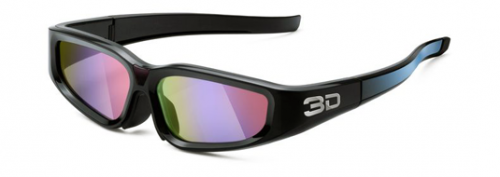Virtual motion, real consequences

Ludwig Maximilian University of Munich researchers have shown that virtual optical stimuli can lead to aftereffects that significantly alter our perception of self-motion. This finding has implications for safe use of emerging technologies such as virtual-reality headsets.
Moving pictures can produce illusions – and not just in the cinema: If one stares for a time at a homogeneous flow – such as a waterfall – and then looks at a stationary surface, that surface will appear to be moving in the opposite direction to the falling water. Indeed, this so-called aftereffect can be observed across different sensory modalities, as LMU researchers Luigi Cuturi and Paul MacNeilage now report in the journal Current Biology. "Optical illusions like that are not just everyday curiosities. They also provide important clues to how sensory information is processed in the brain," MacNeilage explains.
Aftereffects arise because the information processing operations that underlie our perceptions adapt their response to certain aspects of a persistent stimulus: When exposed to a stimulus that is maintained over a long period, processing of the sensory information by the nerve cells becomes "entrained". As a consequence, the sustained stimulus has an impact on the processing of the subsequent stimulus. One example of this is how the retina's sensitivity to light adjusts to changes in light intensity: When one comes inside after having been out in the sun for a while, the room appears to be darker than it would if we had just come up from the dark cellar in the basement. In most cases, this adaptive process is observed only in the sensory system that was excited by the preceding stimulus, i.e. optical stimuli generate optical aftereffects. "We have now experimentally investigated whether adaptation to a visual stimulus can also have an impact on a different sensory system – in this case, the vestibular system which supports our sense of balance, orientation and physical motion in space," says MacNeilage.
In their experimental set-up, the researchers made use of a mobile platform. Their subjects were placed on the stationary platform and were shown rapid movie sequences, which induced the illusion of either forward or backward movement. Then the room was darkened and the platform was activated, and subjects were asked to indicate the direction of these small, but real, platform movements. It turned out that their choice of response was affected by the polarity of the preceding visual stimulus, such that the subjects misjudged the direction of motion of the platform. This so-called cross-modal after-effect – an after-effect that is "transferable" to a different sensory system – shows that processing of incoming information received via the visual and vestibular systems must involve common neural representations and mechanisms – and the adapted state of one system has an impact on the other.
"Our result also has implications for the development of novel virtual reality devices, such as virtual-reality headsets", says MacNeilage. "If visual stimuli that produce the illusion of movement can give rise to after-effects that affect our perception of real movements in space, this raises pertinent questions which should be taken into account in the safety instructions and manuals provided to the users of such devices."
More information: "Optic Flow Induces Nonvisual Self-Motion Aftereffects" DOI: dx.doi.org/10.1016/j.cub.2014.10.015
















